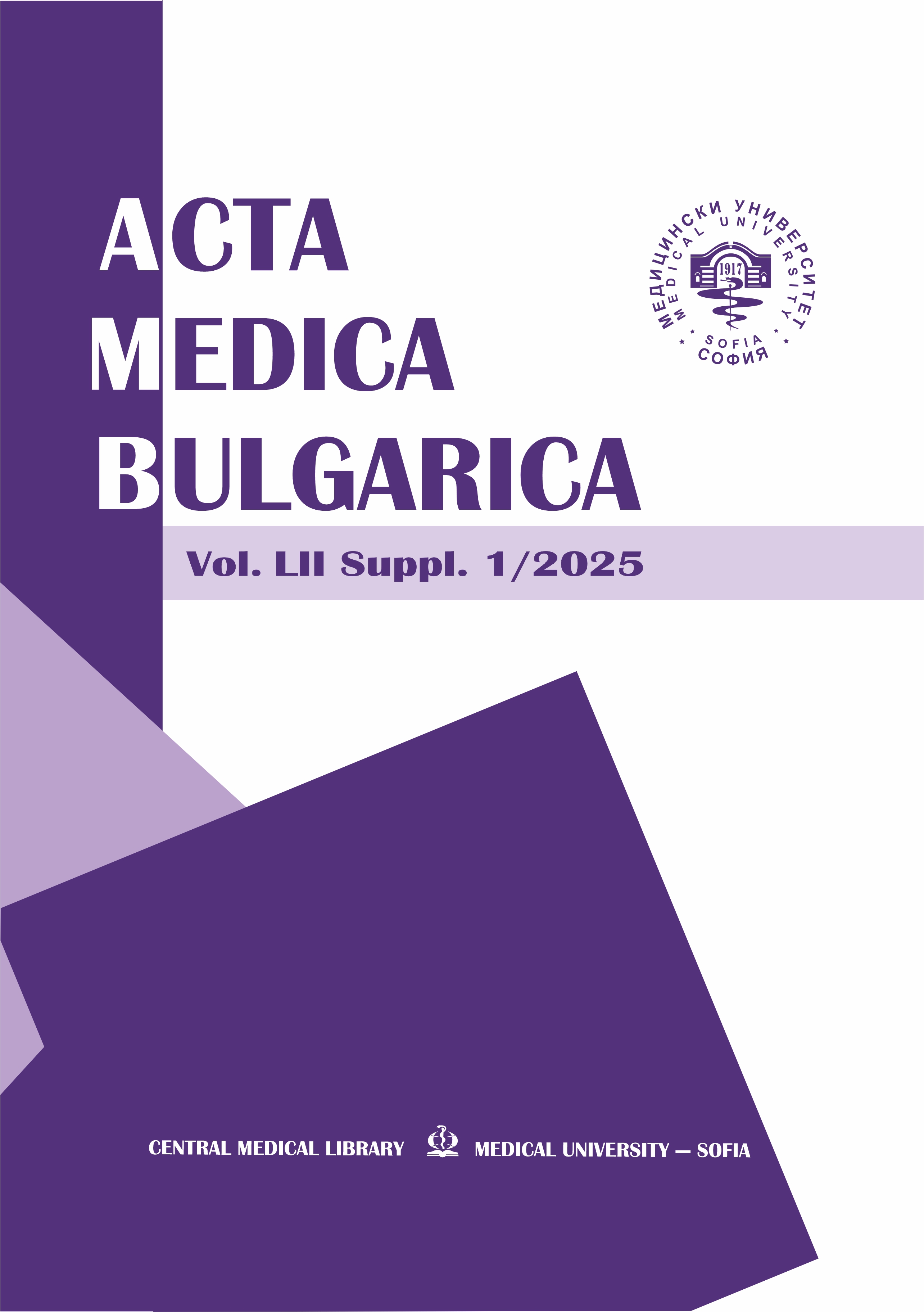Erythema multiforme-like eruption induced after immune checkpoint inhibitor and target therapy in a patient with melanoma malignum – a case report
DOI:
https://doi.org/10.2478/AMB-2025-0025Keywords:
erythema multiforme-like eruption, malignant melanoma, immunotherapy, target therapy, case reportAbstract
Introduction. Erythema multiforme is an acute polyetiological hypersensitivity reaction characterized by polymorphic rashes of the skin and the mucous membranes. The triggering factors for the disease might be viral and bacterial infections, tumors, autoimmune
connective tissue diseases, drugs. Immune checkpoint inhibitors are used for the treatment of multiple oncological diseases but they often cause cutaneous immune-related adverse events. Pembrolizumab is a monoclonal antibody that blocks the programmed death 1 receptor and leads to T-cytotoxic lymphocyte activation. Vemurafenib is a BRAF inhibitor which is used for the treatment of metastatic melanomas positive for BRAF V600E mutation and blocks tumor cell proliferation. Both of these agents improve survival of melanoma patients, but the modified immune condition often results in severe side effects. Case presentation. We report a case of a 77-year-old male patient who developed severe erythema multiforme-like eruption associated with Vemurafenib target therapy and Pembrolizumab immunotherapy for metastatic malignant melanoma. Conclusion. Immune checkpoint inhibitors and target therapy prolong the patient’s life, resulting in significantly improved patient survival but various immune related cutaneous adverse reactions like erythema multiforme-like eruption or even Stevens–Johnson syndrome and toxic epidermal necrolysis can occur. Dermatologists play an important role in evaluating and managing these cutaneous toxicities. Our case presentation emphasizes the role of physicians in the follow-up of patients with malignant melanoma who must carefully observe general and dermatological status during the melanoma management.
References
Weber JS, Yang JC, Atkins MB, Disis ML. Toxicities of Immunotherapy for the Practitioner. J Clin Oncol. 2015 Jun 20;33(18):2092-9. doi: 10.1200/JCO.2014.60.0379.
Michielin O, van Akkooi ACJ, Ascierto PA, et al. ESMO Guidelines Committee. Electronic address: clinicalguidelines@esmo.org. Cutaneous melanoma: ESMO Clinical Practice Guidelines for diagnosis, treatment and follow-up. Ann Oncol. 2019 Dec 1; 30(12):1884-1901. doi: 10.1093/annonc/mdz411.
von Hebra F. Acute Exantheme und Hautkrankheiten, Verlag von Ferdinand von Enke, Erlangen, 1860.
Paulino L, Hamblin DJ, Osondu N, Amini R. Variants of Erythema Multiforme: A Case Report and Literature Review. Cureus. 2018 Oct 16;10(10):e3459. doi: 10.7759/cureus.3459.
Mockenhaupt M. Severe drug-induced skin reactions: clinical pattern, diagnostics and therapy. J Dtsch Dermatol Ges. 2009 Feb;7(2):142-60; quiz 161-2. English, German. doi: 10.1111/j.1610-0387.2008.06878.x.
Damevska K, Vassileva S, Kostadinova-Kunovska S. Erythema Multiforme, Stevens–Johnson Syndrome, and Toxic Epidermal Necrolysis. In: Smoller, B., Bagherani, N. (eds) Atlas of Dermatology, Dermatopathology and Venereology. Springer, Cham. 2022. https://doi.org/10.1007/978-3-319-53808-2_60
Martin-Liberal J, Kordbacheh T, Larkin J. Safety of pembrolizumab for the treatment of melanoma. Expert Opin Drug Saf. 2015 Jun;14(6):957-64. doi: 10.1517/14740338.2015.1021774.
Garbe C, Eigentler TK. Vemurafenib. Recent Results Cancer Res. 2018; 211:77-89. doi: 10.1007/978-3-319-91442-8_6.
Wantz M, Spanoudi-Kitrimi I, Lasek A. Nécrolyse épidermique toxique au vemurafenib [Vemurafenib-induced toxic epidermal necrolysis]. Ann Dermatol Venereol. 2014 Mar;141(3):215-8. French. doi: 10.1016/j.annder.2013.10.054.
McFarlane T, Rehman N, Wang K, et al. Cutaneous toxicities of new targeted cancer therapies: must know for diagnosis, management, and patient-proxy empowerment. Ann Palliat Med. 2020 May;9(3):1296-1306. doi: 10.21037/apm.2019.08.05.
Haanen JBAG, Carbonnel F, Robert C, et al. ESMO Guidelines Committee. Management of toxicities from immunotherapy: ESMO Clinical Practice Guidelines for diagnosis, treatment and follow-up. Ann Oncol. 2017 Jul 1;28(suppl_4):iv119-iv142. doi:0.1093/annonc/mdx225. Erratum in: Ann Oncol. 2018 Oct 1;29(Suppl 4):iv264-iv266.
Hashimoto H, Ito T, Ichiki T, et al. The Clinical and Histopathological Features of Cutaneous Immune-Related Adverse Events and Their Outcomes. J Clin Med. 2021 Feb 12;10(4):728. doi: 10.3390/jcm10040728.
Sibaud V, Meyer N, Lamant L, et al. Dermatologic complications of anti-PD-1/PD-L1 immune checkpoint antibodies. Curr Opin Oncol. 2016 Jul;28(4):254-63. doi: 0.1097/CCO.0000000000000290.
Sibaud V. Dermatologic Reactions to Immune Checkpoint Inhibitors: Skin Toxicities and Immunotherapy. Am J Clin Dermatol. 2018 Jun;19(3):345-361. doi: 10.1007/s40257-017-0336-3.
Coleman EL, Olamiju B, Leventhal JS. The life-threatening eruptions of immune checkpoint inhibitor therapy. Clin Dermatol. 2020 Jan-Feb;38(1):94-104. doi: 0.1016/j.clindermatol.2019.10.015.
Geisler AN, Phillips GS, Barrios DM, et al. Immune checkpoint inhibitor-related dermatologic adverse events. J Am Acad Dermatol. 2020 Nov;83(5):1255-1268. doi: 10.1016/j.jaad.2020.03.132.
Nomura H, Takahashi H, Suzuki S, et al. Unexpected recalcitrant course of drug-induced erythema multiforme-like eruption and interstitial pneumonia sequentially occurring after nivolumab therapy. J Dermatol. 2017 Jul;44(7):818-821. doi: 10.1111/1346-8138.13810.
Downloads
Published
Issue
Section
License
Copyright (c) 2025 P. Vasilev, S. Ramadan, I. Yordanova, E. Simeonov (Author)

This work is licensed under a Creative Commons Attribution-NonCommercial-NoDerivatives 4.0 International License.
You are free to share, copy and redistribute the material in any medium or format under these terms.


 Journal Acta Medica Bulgarica
Journal Acta Medica Bulgarica 